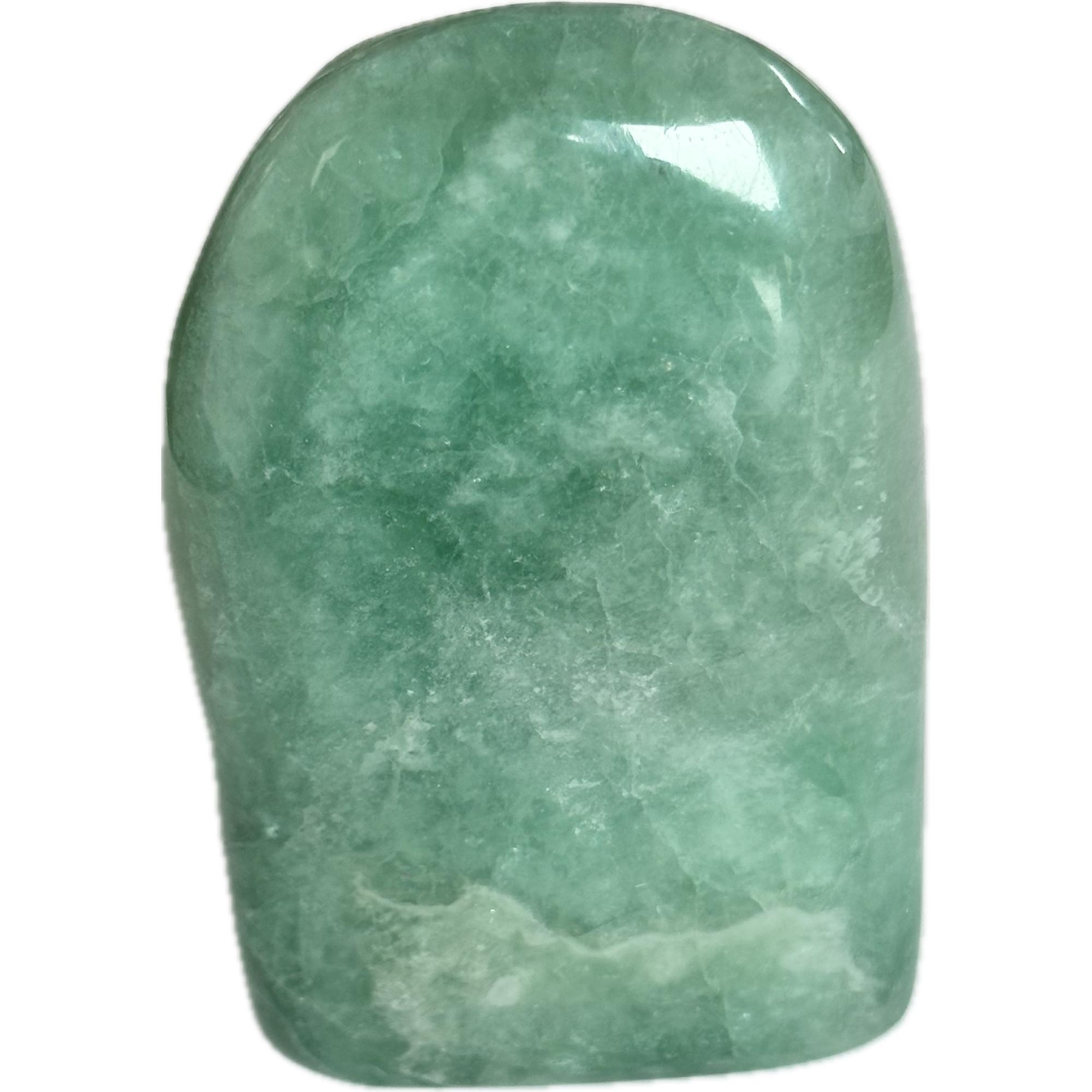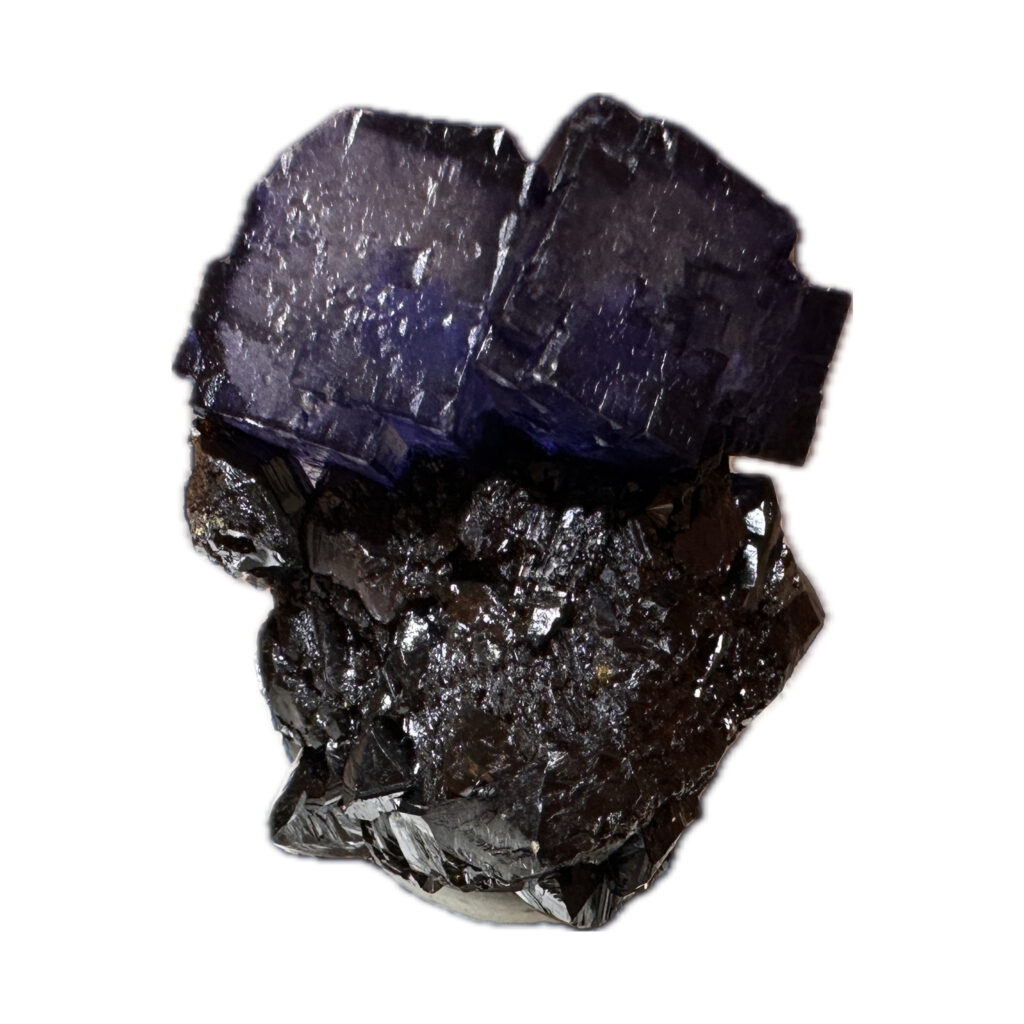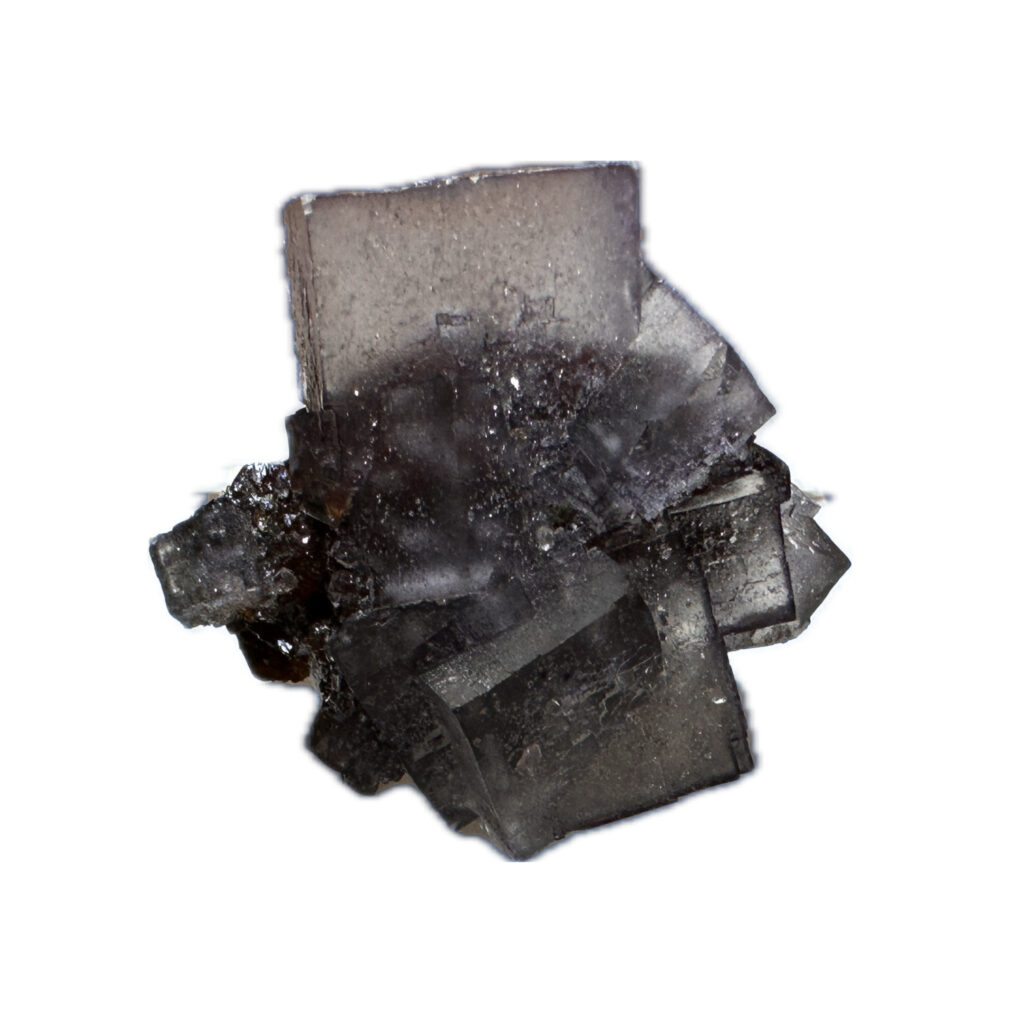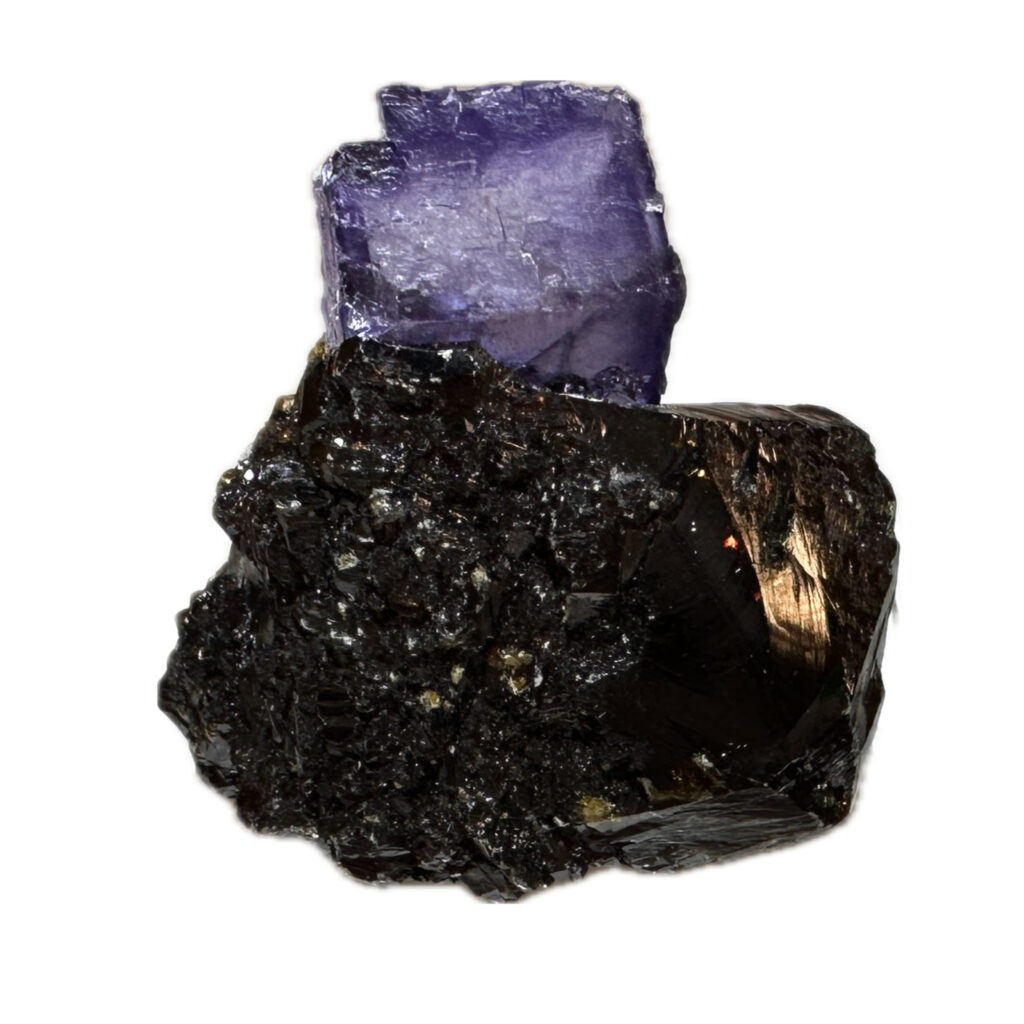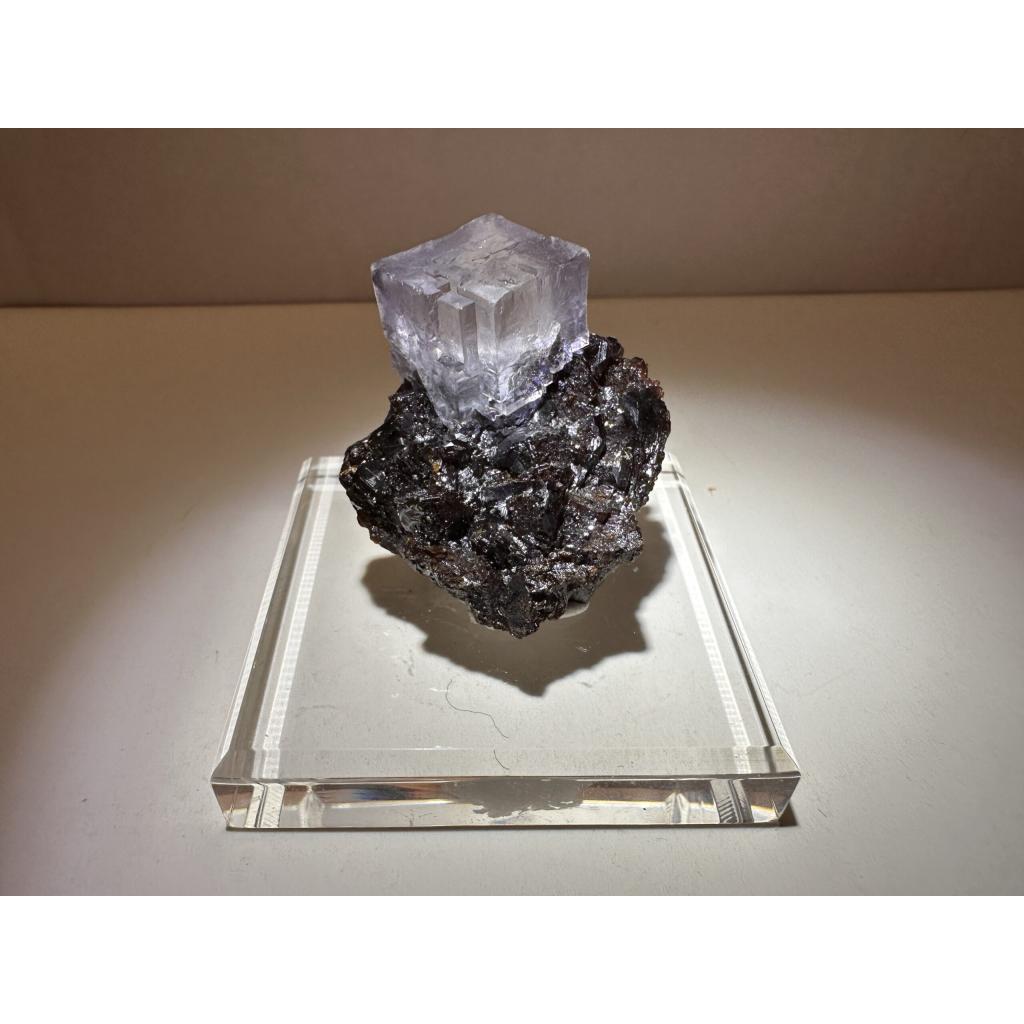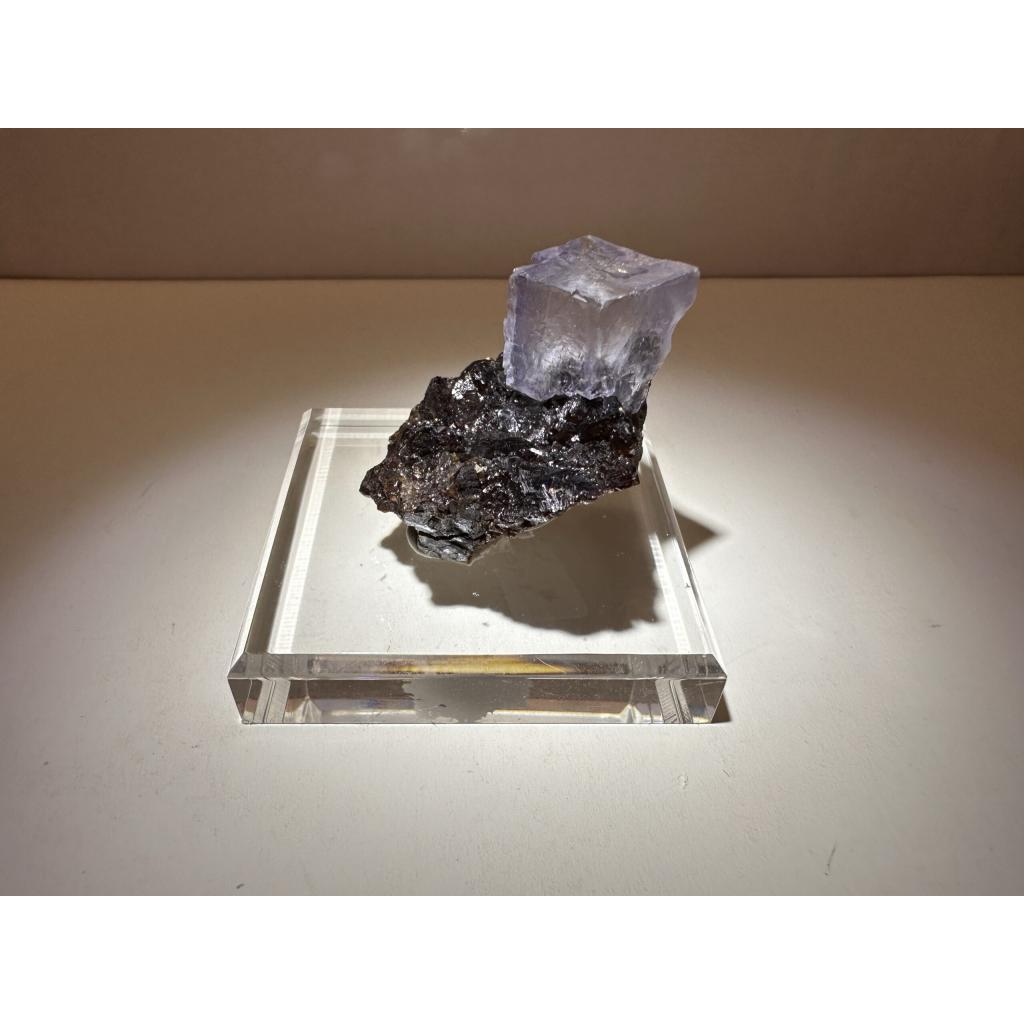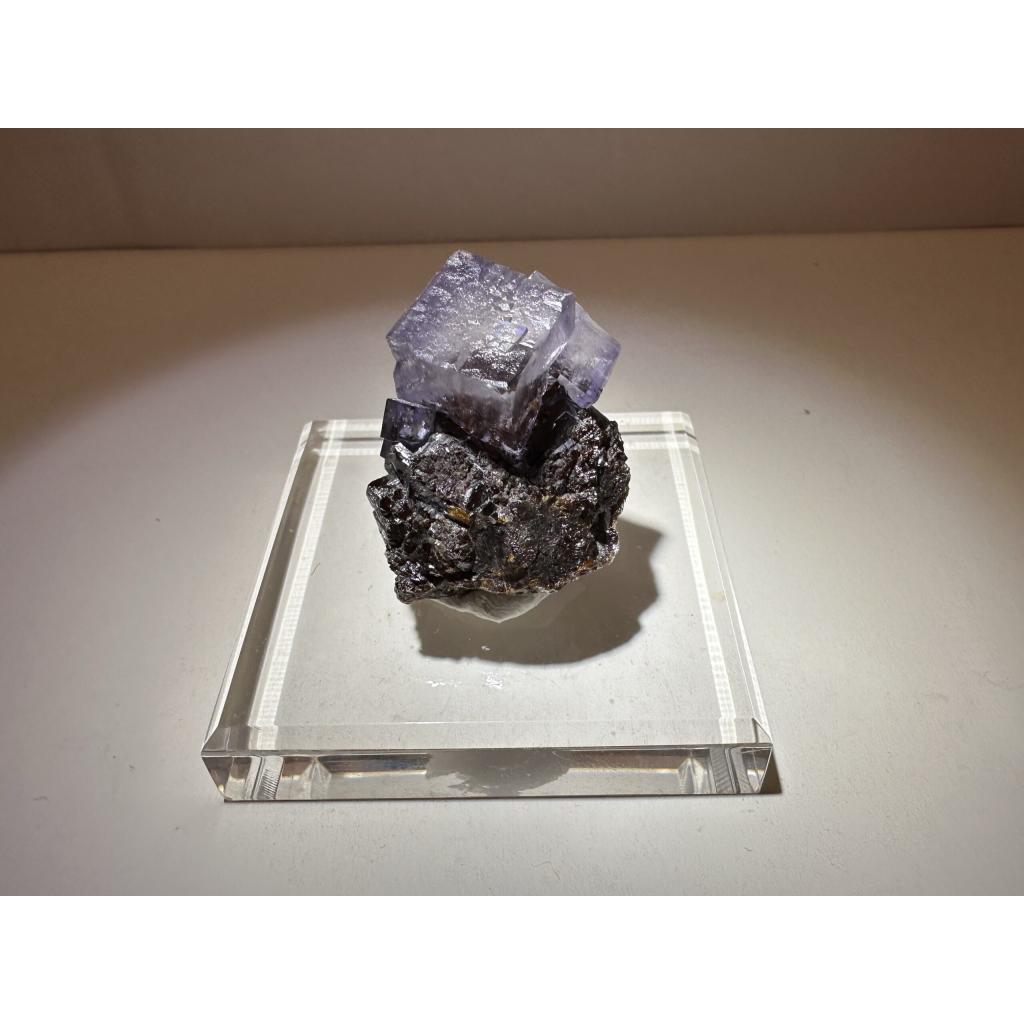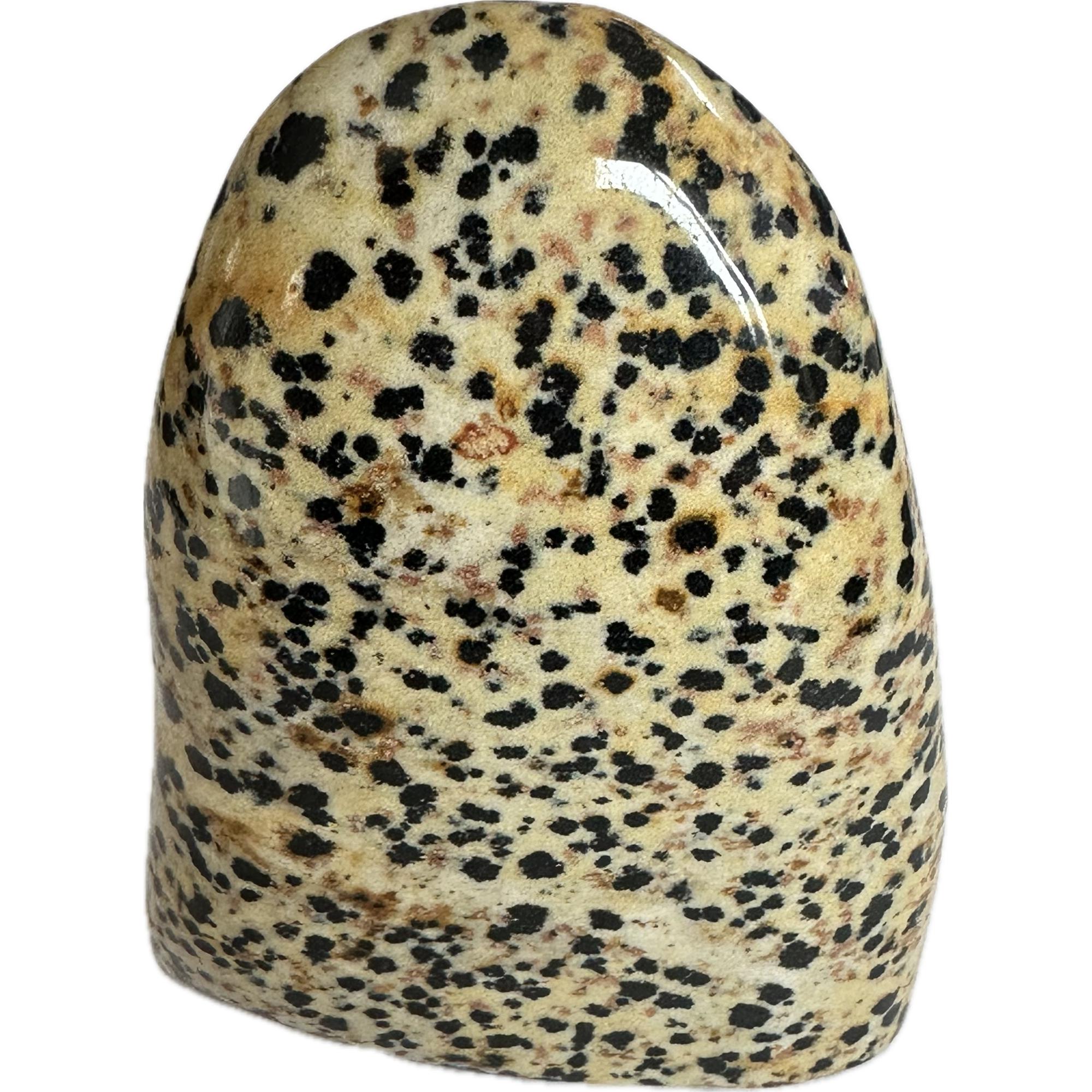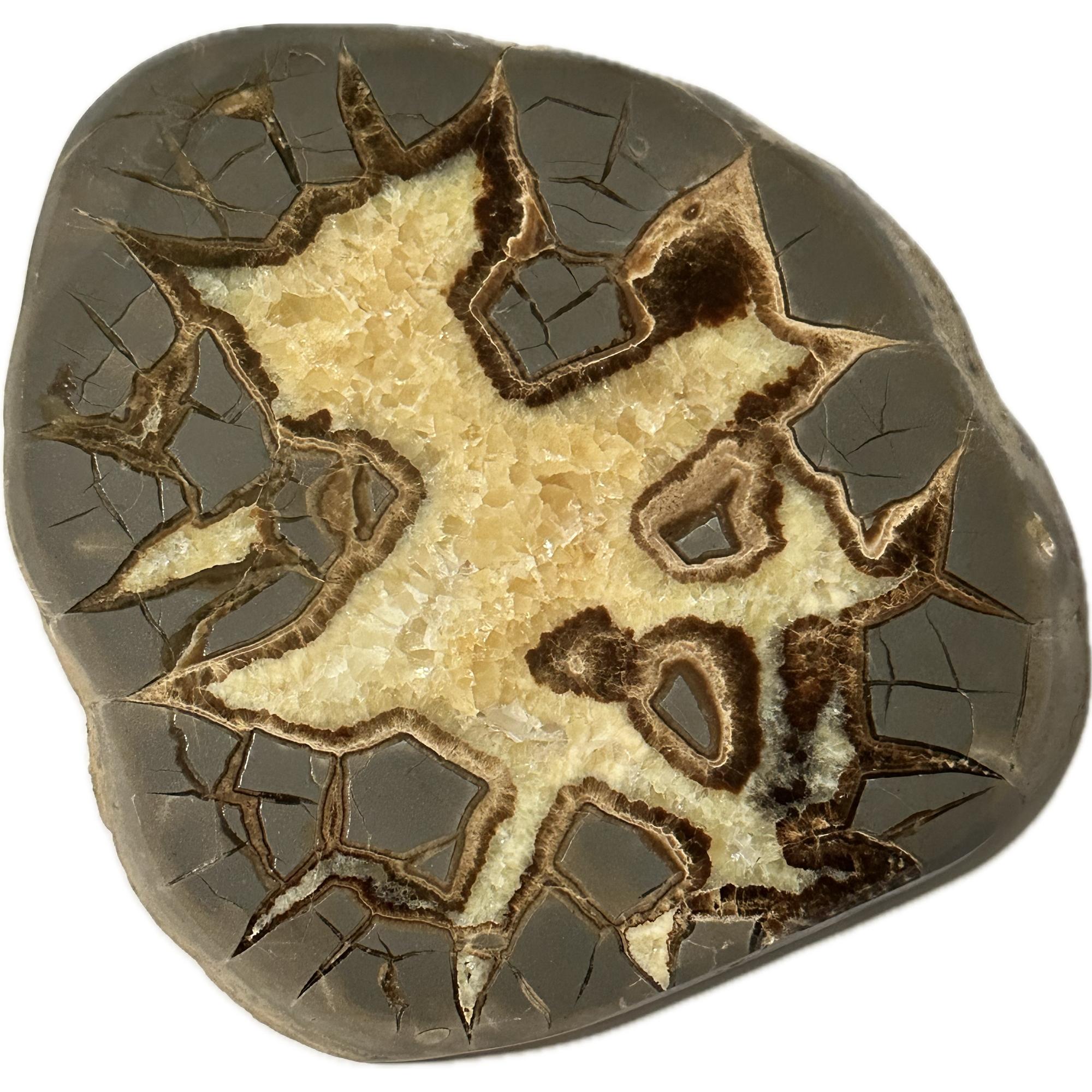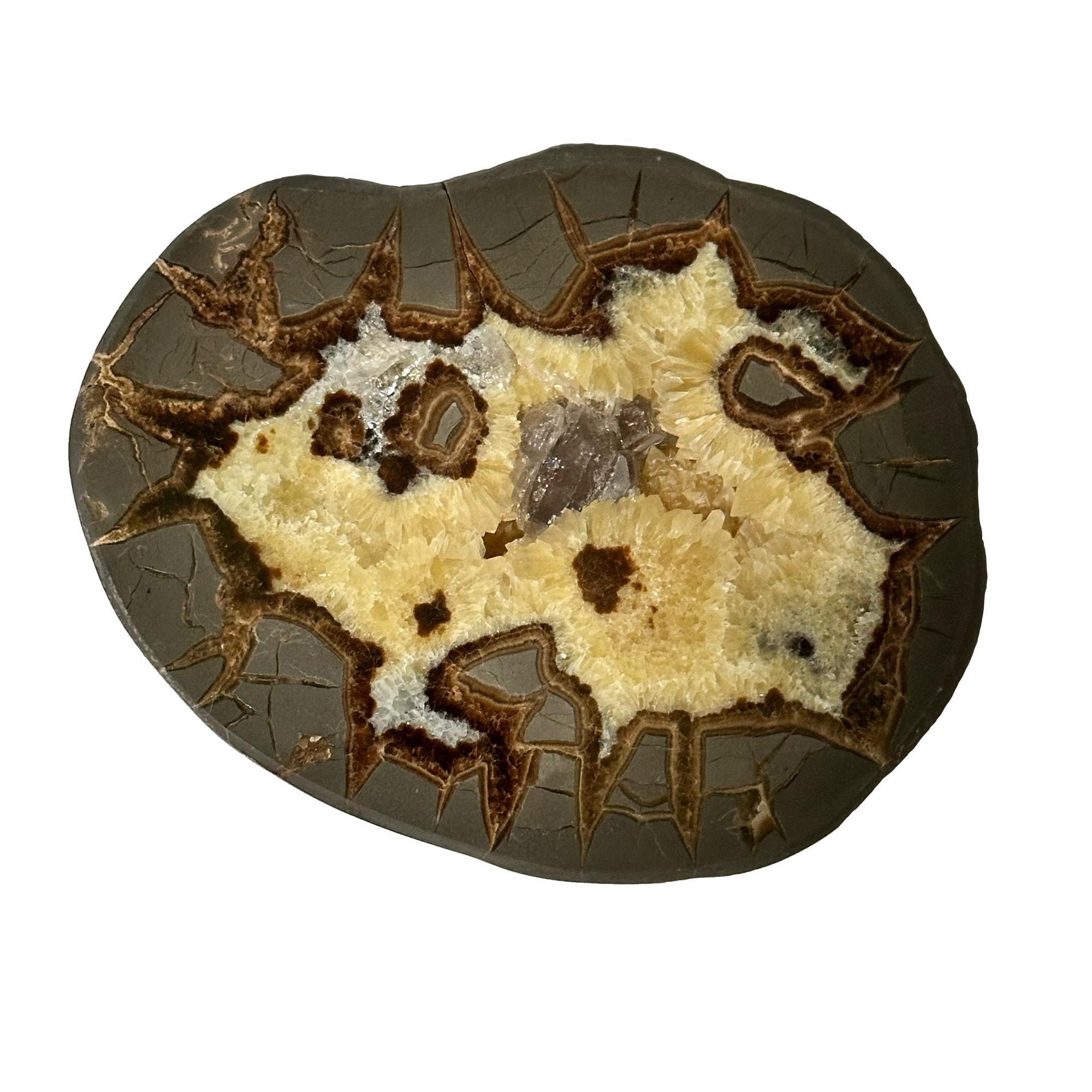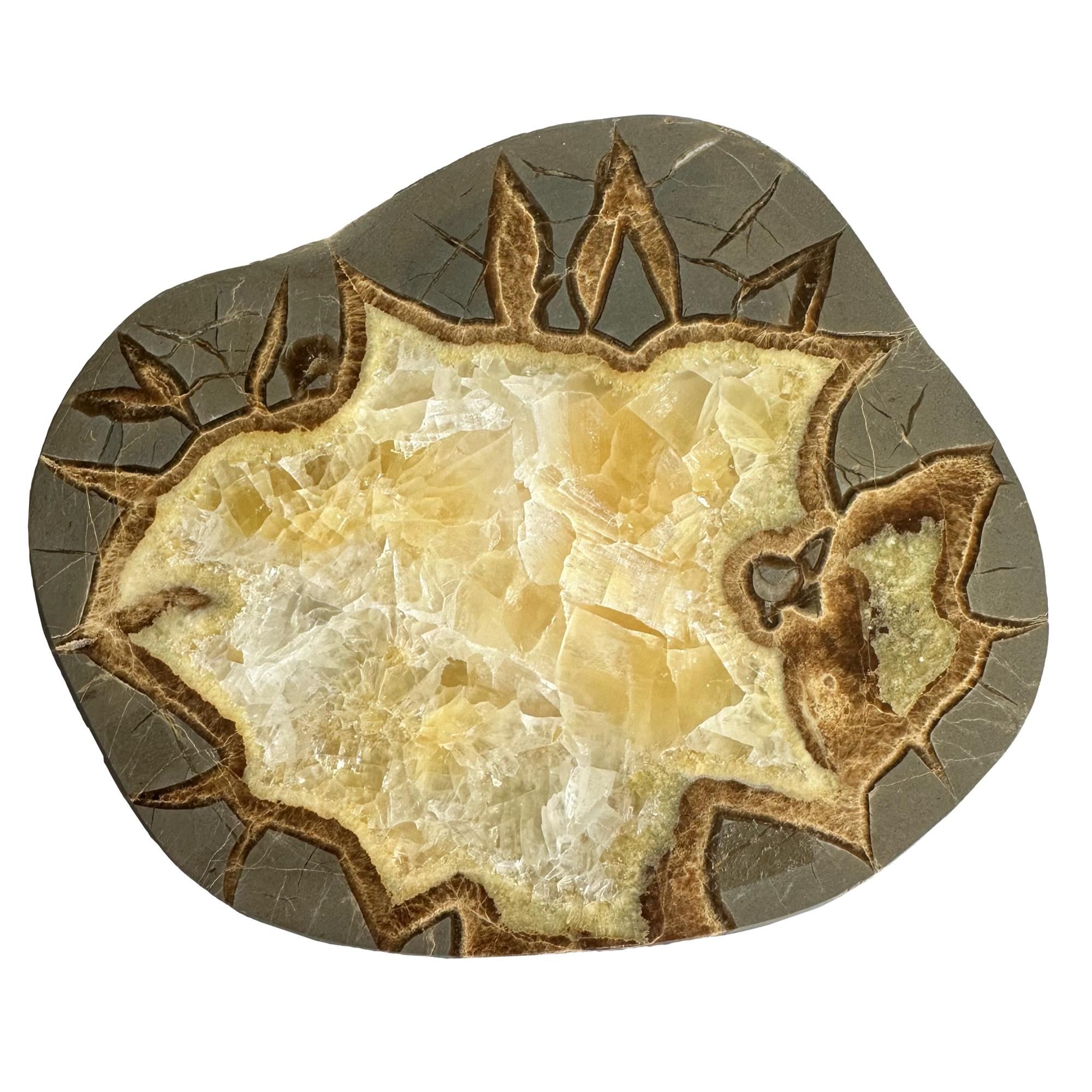A vibrant and versatile mineral, holds significant importance in China’s geological landscape and cultural heritage. Abundant deposits of fluorite are found throughout various provinces such as Hunan, Zhejiang, Jiangxi, and Inner Mongolia. These deposits were formed through geological processes involving hydrothermal activity and the deposition of fluorine-rich fluids in limestone and other host rocks.
Fluorite, also known as fluorspar, is a halide mineral composed of calcium fluoride (CaF2). It crystallizes in cubic or octahedral forms, though it can also occur in massive, botryoidal, or granular habits. One of fluorite’s most notable features is its wide range of colors, including purple, blue, green, yellow, and colorless, often occurring in beautiful banded or zoned patterns. These vibrant hues are attributed to various trace elements present during its formation.
The mineral holds immense industrial significance due to its diverse properties. It is a vital source of fluorine, used in the production of hydrofluoric acid, fluorinated compounds, and fluoropolymers essential in industries such as metallurgy, chemical manufacturing, and electronics.
Beyond its industrial applications, fluorite is prized for its ornamental and lapidary uses. Its striking colors and translucent to transparent nature make it a favored gemstone among collectors and jewelry enthusiasts. Fluorite is often fashioned into beads, cabochons, and faceted stones for use in rings, pendants, and other jewelry pieces.
In Chinese culture, fluorite holds both historical and contemporary significance. The mineral has been mined and utilized for centuries, with archaeological evidence indicating its use in ornamental objects, carvings, and as a pigment in pottery and artwork.
Fluorite’s vibrant colors and unique fluorescence under ultraviolet light have captured the imagination of artisans and collectors throughout China’s history. The mineral’s association with wealth, prosperity, and harmony has led to its inclusion in various cultural practices and beliefs.
In modern China, fluorite continues to play a prominent role in the economy, particularly in regions with significant mining operations. It is a valuable commodity in international trade, with China being one of the world’s leading producers and exporters of fluorite.
Furthermore, fluorite mining and processing have contributed to the development of local economies and communities, providing employment opportunities and infrastructure development in regions where deposits are abundant.
History and Discovery
The story of fluorite mining at the Elmwood Mine dates back to the mid-20th century when mineral prospectors first recognized the area’s potential for mineral deposits. In 1969, exploration efforts led to the discovery of substantial fluorite deposits, sparking a boom in mining activity that would continue for decades to come.
The Elmwood Mine quickly gained recognition as one of the premier fluorite-producing mines in the world, renowned for its exceptional quality and abundance of specimens. Over the years, the mine has yielded a diverse array of fluorite crystals, ranging in color from vivid purples and greens to deep blues and yellows, captivating collectors and researchers with their beauty and diversity.
Geological Formation
The geological formation of fluorite at the Elmwood Mine is a testament to the complex interplay of geological processes that shape Earth’s crust. The mine is situated within the Central Tennessee Zinc District, a region characterized by its rich concentration of zinc, lead, and fluorite deposits.
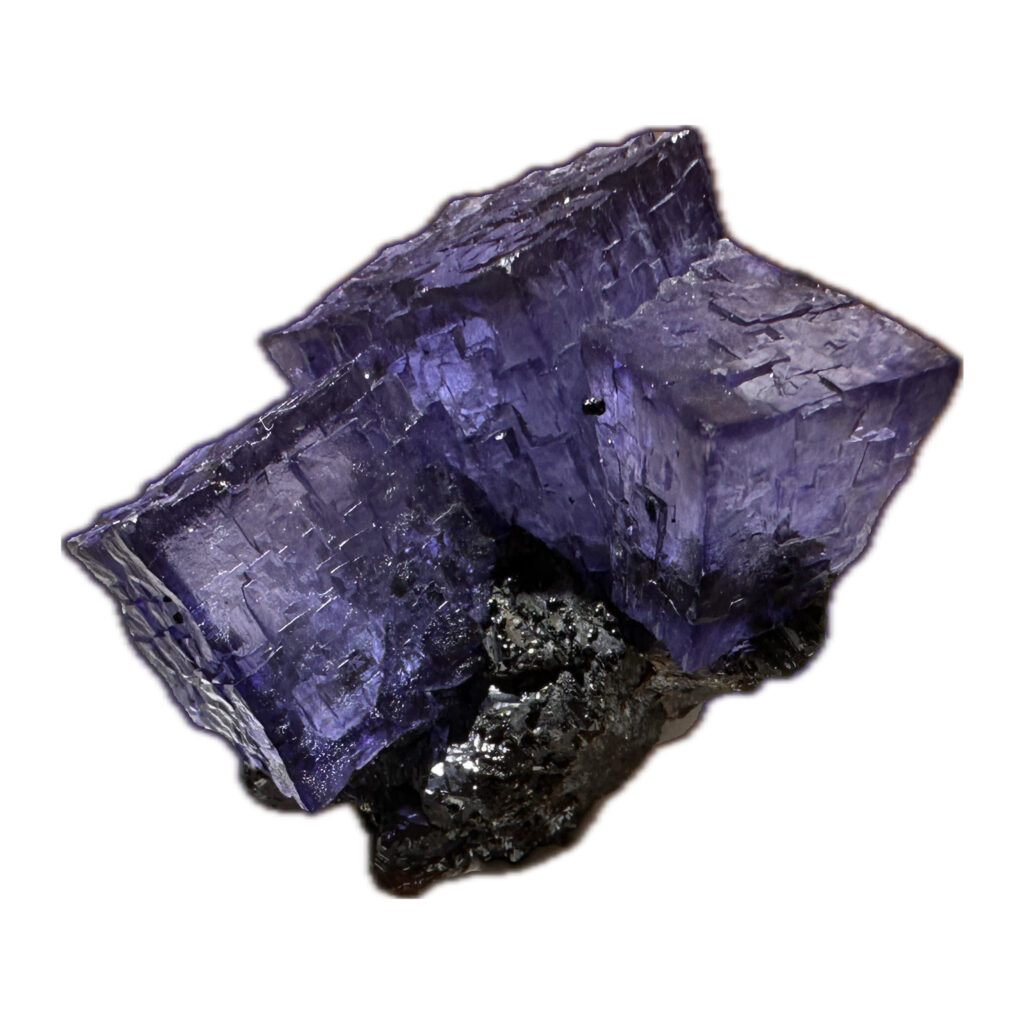
Fluorite crystals at the Elmwood Mine primarily occur within limestone and dolomite formations, which served as host rocks for mineralization processes. The formation of fluorite deposits is believed to have occurred during the late Paleozoic Era, approximately 300 million years ago, when hydrothermal fluids enriched with fluorine and other minerals ascended from deep within the Earth’s crust.
As these mineral-rich fluids migrated through fractures and faults within the limestone and dolomite formations, they precipitated out, forming veins and pockets of fluorite crystals. Over time, the crystallization process gave rise to the diverse array of fluorite specimens found within the mine, each exhibiting unique colors, crystal habits, and internal structures.
Characteristics of Elmwood Fluorite
Fluorite specimens from the Elmwood Mine are renowned for their exceptional clarity, vibrant colors, and distinctive crystal formations. While fluorite crystals can occur in a variety of colors, including purple, green, blue, yellow, and colorless, specimens from Elmwood are particularly prized for their rich hues and intense saturation.
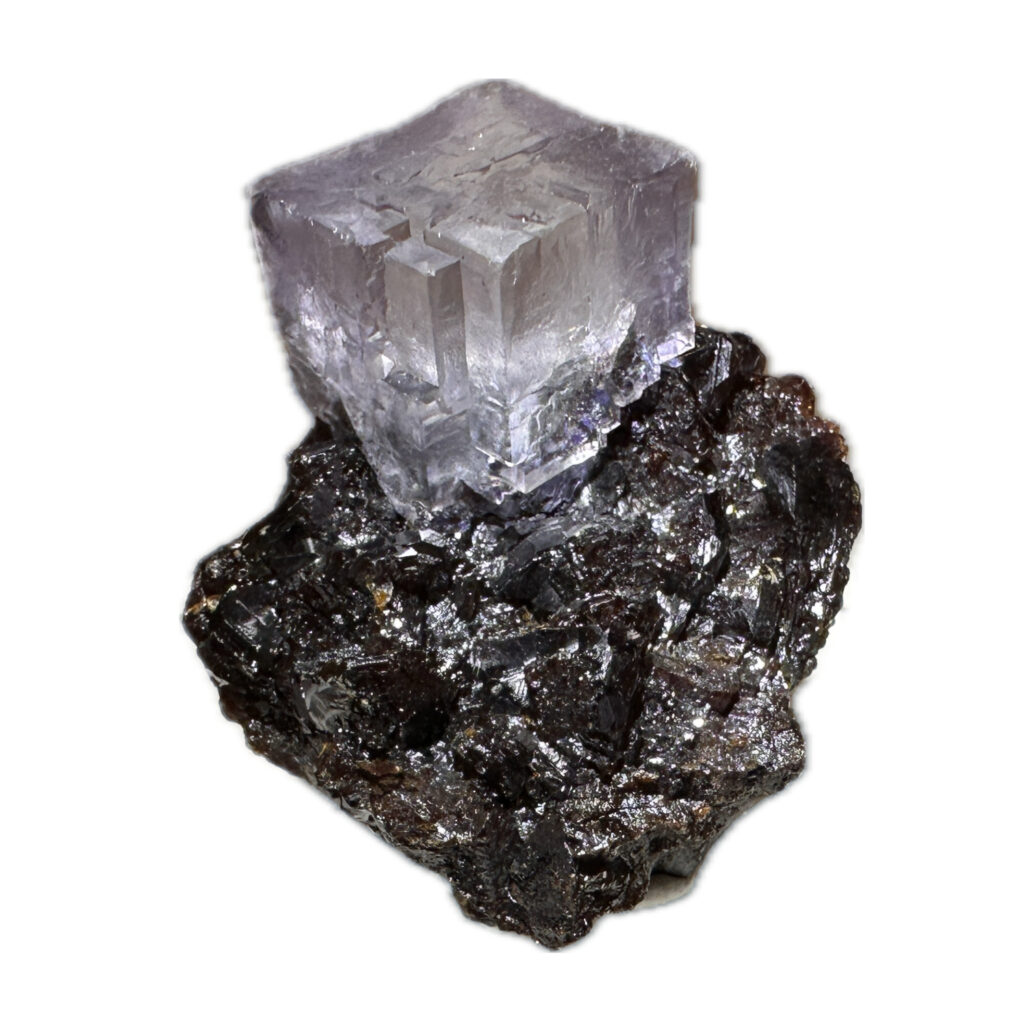
One of the defining characteristics of Elmwood fluorite is its transparency, which allows light to pass through the crystals, creating a mesmerizing display of color and brilliance. This optical property, known as diaphaneity, enhances the aesthetic appeal of Elmwood fluorite specimens, making them highly sought after by collectors and lapidaries.
In addition to their vibrant colors, Elmwood fluorite crystals often exhibit complex crystal habits and internal structures, adding to their visual intrigue. Common crystal forms include cubic, octahedral, and dodecahedral shapes, with some specimens displaying intricate zoning patterns and internal phantoms caused by variations in mineral composition and growth conditions.
Significance and Uses
Fluorite from the Elmwood Mine holds significant cultural, scientific, and economic value, contributing to various industries and disciplines.
Culturally, Elmwood fluorite specimens are prized as collectible gemstones and decorative objects, admired for their beauty and rarity. Collectors and enthusiasts worldwide seek out Elmwood fluorite crystals to add to their mineral collections, drawn to their exquisite colors, crystal formations, and historical significance.
Furthermore, fluorite has industrial applications in various sectors, including metallurgy, ceramics, optics, and pharmaceuticals. Its properties as a fluxing agent, optical material, and source of fluorine make it indispensable in the production of steel, aluminum, glass, and other industrial products.
Preservation and Conservation
As with all natural resources, responsible stewardship and conservation efforts are essential for preserving the integrity and sustainability of fluorite deposits at the Elmwood Mine. Mining activities must be conducted in accordance with environmental regulations and best practices to minimize ecological impacts and protect sensitive habitats.
Additionally, efforts should be made to promote responsible collecting practices among mineral enthusiasts and collectors to ensure the long-term sustainability of fluorite specimens from Elmwood. This includes obtaining proper permits, respecting private property rights, and adhering to ethical guidelines for specimen extraction and handling.
Prehistoric 101 (Learn about fossils, minerals, and meteorites)
What is a Mineral?
Fluorite: Learn More
Discovering Prehistoric Life and Fossils

